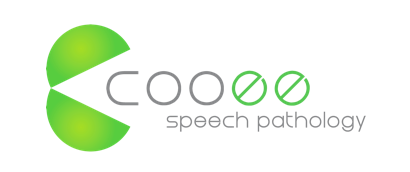What is Key Word Sign (KWS)?

Key Word Signs are manual signs and gestures that are used to support communication.
There is a core vocabulary of words that are matched to hand signs. These signs are borrowed from Auslan, which is the language of the Australian Deaf Community.
Key Word Sign was previously known as Makaton.
The main features of Key Word Sign include:
- Key Word signs are always used at the same time as spoken words
- You only sign the key words in a sentence, not every word
- You use natural gesture (e.g. pointing) and facial expressions as well as signs
Key Word Sign can easily be used alongside other forms of visual communication and is one type of Augmentative and Alternative Communication (AAC).
Key Word Sign is not a full sign language like Auslan. Auslan is a complete language that has its own grammar and word order that is different from English. Auslan is a language used by the Deaf and Hearing Impaired community and is not recommended for children with adequate hearing that are experiencing communication delays.
Who is Key Word Sign for?
Key Word Sign is great for children, adolescents and adults who are experiencing communication delays or challenges. Key Word Sign can be helpful for people:
- Who are pre-verbal, minimally verbal, or non-verbal
- Who benefit from visual supports to understand and learn new words
- Whose speech and spoken communication is difficult to understand
Why is Key Word Sign helpful?
Beginning communicators
For beginning communicators Key Word Signs can be a great way to support language learning when you are working on establishing early interaction and communication skills. Early engagement is all about making connections with other people by looking, smiling, and sharing experiences with them. Sign is great for the beginning communicator because they can receive communication support, without needing to direct their attention away from the person they are engaging with.
Developing communicators
For developing communicators Key Word Sign is great to help them learn new vocabulary. A single word takes less than one second to say, which means the person only has a very short time to hear, learn, and attempt to remember the word (auditory modality). Whereas a sign can last a lot longer and provides the learner another modality to receive the new information (visual modality). For developing communicators we always recommend you slow down your speech, but also provide a visual communication option to support learning and Key Word Sign is one great way to achieve this. It is particularly practical because you always have your hands with you!
Functional Communication
Key Word Sign is also great for supporting Functional Communication. Communication is “functional” when the person is able to express their intended message on topics that are interesting and meaningful to them to the people in their families and community. For people with communication difficulties, functional communication is often “multi-modal”, meaning that they will use a number of different methods to express themselves. Key Word Sign is one tool a multi-modal communicator can use to help express their message.
How do I learn Key Word Sign?
There are a number of ways you can learn Key Word Sign, however it is always recommended that you do so under the supervision of a Speech Pathologist (aka Speech Therapist).
In-person:
- Attend a Key Word Sign workshop organised by Key Word Sign Australia
- Learn Key Word Sign from your Speech Pathologist in sessions with your child
Resources:
- Key Word Sign Australia iPad app from the Apple Store (not available on Android).
- Getting Started with Key Word Sign book available from Scope
- Key Word Sign posters available from Scope
- Key Signs CD Rom available from Scope (be sure to check that your computer operating system is compatible with the CD before ordering)
- Subscribe to Key Word Sign Australia’s YouTube channel to access free videos on a range of topics
- Look up individual signs using the Auslan Sign Bank
I am not sure if Key Word Sign is right for my child.
If you would like more information on Key Word Sign, or help deciding if Key Word Sign is right for your child please get in touch with our North Brisbane Clinic on (07) 3265 4495 or [email protected] to book in with a Speech Pathologist today.

Stephanie Harris
